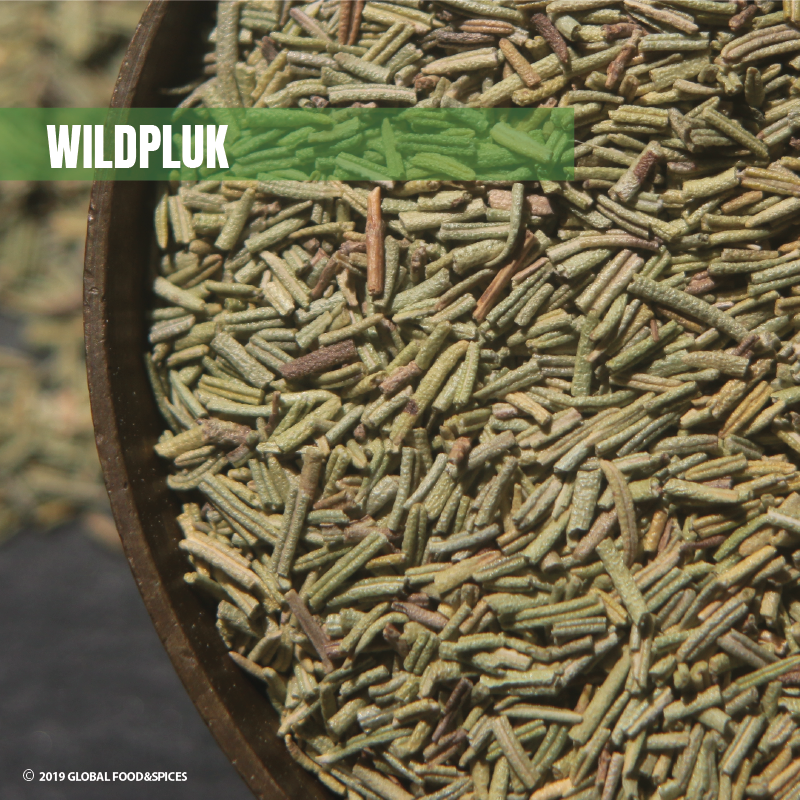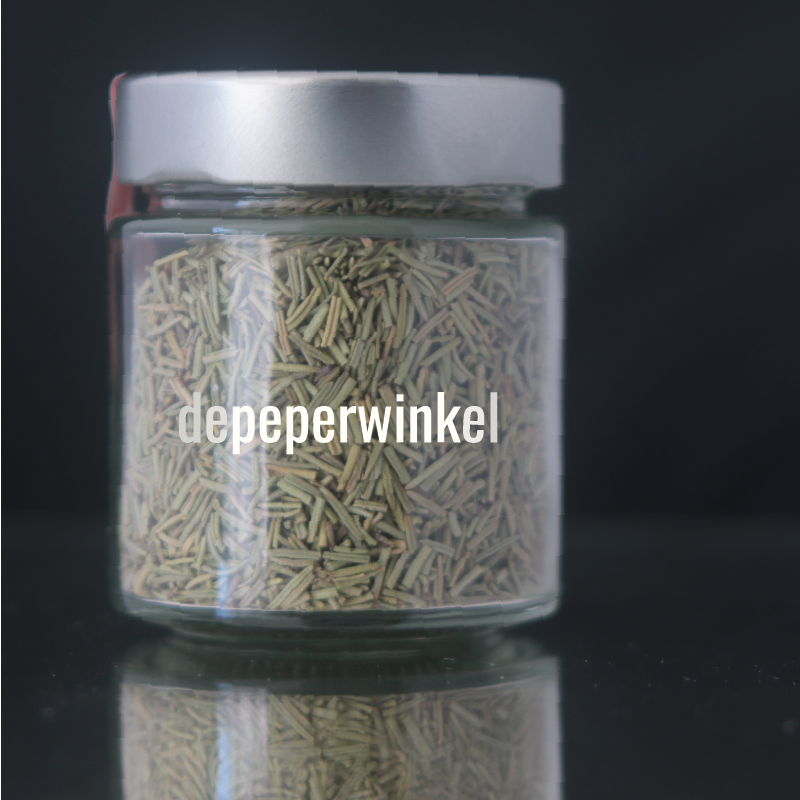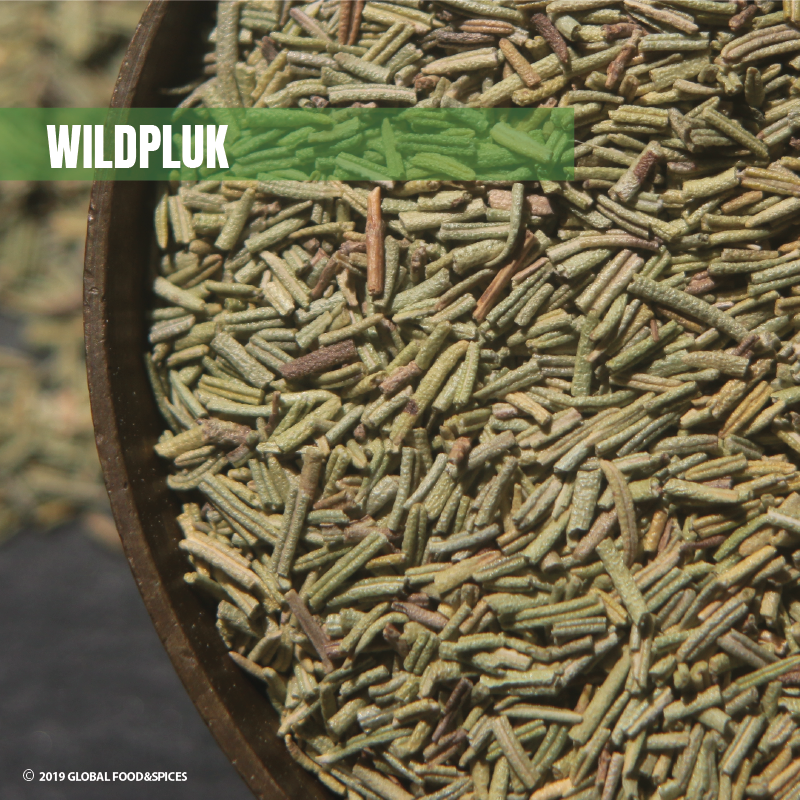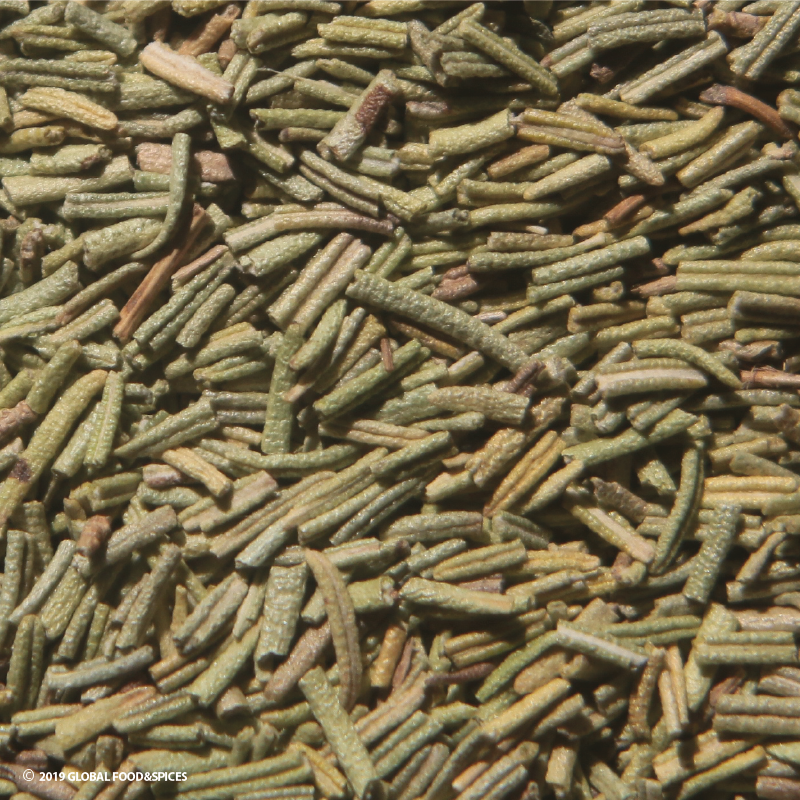depeperwinkel
Rosemary (Dentrolívano)
Rosemary (Dentrolívano)
In stock
Unable to load availability for pickup
These fine pieces of rosemary leaves are ready to use. They have a pleasant, strong flavour that they prefer to hold for a long time. Give rosemary leaves time to be absorbed by a dish, and feel free to bake them along!
In many gardens, the hardy rosemary with its evergreen 'needles' is found. They are curled leathery leaves, green on top, greyish on the underside. The leaves are so sturdy that they can withstand baking and grilling. They are therefore a popular herb in baked potatoes, grilled meat and game.
Fresh rosemary leaves are too hard and tough to eat, especially the oversized leaves from the garden. Use a sharp knife to finely chop the leaves, but don't chop them, because that will release a strong bitter taste, the defense mechanism of many plants.
Notice how finely textured these dried leaves from the island of Crete are. They come from wild plants with very fine leaves compared to garden rosemary. After harvesting, these are torn from the stems and then cut into small pieces, so that they are perfectly edible. The harvest takes place before the rosemary flowers, when the leaves are at their most flavorful.
Rosemary is a plant from the Lamiaceae family, just like oregano and thyme. It originally grows in the Mediterranean and was already used as a herb in ancient times. It arrived in China in the third century - the Han Dynasty - and many centuries later also in America. Rosemary is therefore not only used in Italian and Greek cuisine, but also in Chinese and Latin American cuisine.
Like thyme, rosemary is a powerful herb, especially this wild-picked variety. But unlike thyme, you don't have to be so wary of overdosing and crowding out other flavors. The reason for this is the aforementioned leathery texture of the leaf, which makes it difficult for the leaf to release its flavor, in other words, it keeps the flavor.
Smell and taste
The taste and smell of rosemary are determined by α- and β-pinene (pine resin), borneol (balsamic), camphor and camphene (camphor) and limonene (citrus).
Usage
The flavour of dried rosemary is best enjoyed when the leaves have had time to release their flavour. In this case, this is only possible to a limited extent due to the leathery leaves. They can withstand heat well. Feel free to add them to a dish that needs to be baked or grilled.
In addition to the classic applications in which rosemary is cooked for a long time, you can also use it in quick preparations, even in stir-fries. It is interesting to use rosemary in an alternative way, such as in reductions (a lot of heat in a short time), or in the form of an infusion (with sugar syrup) that you use with fruity chutneys or savoury jams. Balsamic jam for example.
Wild rosemary combines well with oregano, thyme, basil and fennel seeds.
Recipes:
Features:
- 100% dried leaf of Rosmarinus officinalis
- wild harvested, hand harvested (zipped)
- origin: Greece (Crete)
Assortment
- available in glass and stand-up pouch (no test tubes)
- glass jar contains 30 grams
- stand-up pouches with a capacity of up to 30 to 150 grams
- larger quantities on request
Gift wrapping
- The jar is available in a tasteful gift packaging, consisting of a cube box filled with black tissue paper
- For an overview of our gift packaging, please refer to the gift packaging section
Save:
- store your rosemary pepper in a closed container
- preferably store in a dark, dry and cool place
- at least good until June 2026 (06-2026)
- This expiration date is an indication
Batch number
The batch number helps us trace which supply an item originates from. It is stated on the packing slip and the invoice





